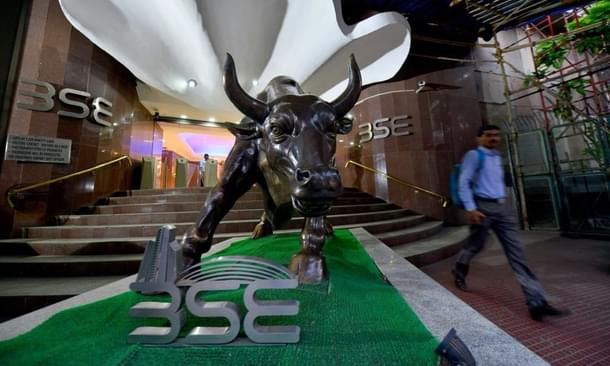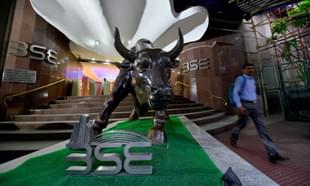Economy
Why Business Confidence May Be Slowly Returning
R Jagannathan
Jan 09, 2018, 10:45 AM | Updated 10:45 AM IST
Save & read from anywhere!
Bookmark stories for easy access on any device or the Swarajya app.


There is now more evidence that the second-quarter gross domestic product (GDP) recovery to 6.3 per cent, after five quarters of steady decline, may not have been a flash-in-the-pan. With one dampener – the low GST collections in December of around Rs 80,000-and-odd crore – most signals are indicating a revival in the economy.
Consider the key data points now available with us. The Nikkei Purchasing Managers’ Index (PMI) is now at a spiffy 54.7 per cent, suggestive of robust expansion and the fifth straight month of positivity. Even the services PMI, which has been under the weather due to the hike in many GST rates, is now on the plus side, at 50.9 per cent. Any reading above 50 means expansion is in the air.
In November 2017, the core sector of eight industries expanded 6.8 per cent, its highest rate in more than a year. Since the core sector comprises over 40 per cent of the Index of Industrial Production (IIP), it means we could be seeing a perkier IIP this week when the numbers are released. Broadly, this would indicate that at least in the manufacturing sector, GST is becoming less of a problem, though it is far from settled.
More important, the growth in the core sector has been led by steel and cement with 16.6 per cent and 17.3 per cent growth respectively. Since steel and cement prices are directly related to spending in construction and real estate, it indicates that public investments in infrastructure and interest rate subventions in affordable housing may be sparking off a small revival in this corner of the market. The real estate industry is far from cheery, thanks to RERA blues (the Real Estate Regulation Act), but the first green shoots are probably visible.
The advance estimates of GDP for this fiscal put out by the Central Statistics Office (CSO) last week seem to have caused some pessimism as it projected growth at 6.5 per cent. But the point is this estimate implies 7 per cent growth in the third and fourth quarter, which implies a turnaround. One cannot rule out the possibility that the COS has been unduly conservative in its prognosis.
With the government indicating that it may be borrowing Rs 50,000 crore more this fiscal year, one can be certain that it will not ease up on public spending even at the cost of some fiscal slippage. But the big surprise this year is the huge inflows expected from disinvestment of public sector companies. As at the end of December 2017, out of the fiscal year’s Rs 72,500 crore disinvestment target, the government had already raised Rs 52,500 crore, thanks to the huge success of the Rs 14,500 crore Bharat 22 Exchange Traded Fund, and two big insurance IPOs (GIC and New India Assurance), among others. With Oil and Natural Gas Corporation set to buy the government’s majority stake in Hindustan Petroleum for a reported price of around Rs 32,000 crore, the year’s target will clearly be exceeded. If more offers for sale, and public sector IPOs, go through, 2017-18 will become the best year ever for disinvestment, possibly exceeding Rs 1 lakh crore.
But large sums have also been raised by private sector companies this fiscal, with the financial sector leading the way. In the last few months, five insurance companies (including GIC and New India) have raised more than Rs 44,000 crore; in the coming few months, the HDFC Group alone will raise another Rs 41,000 crore, Rs 24,000 crore by HDFC Bank, Rs 13,000 crore by HDFC, and Rs 4,000 crore by HDFC Mutual Fund), even as public sector banks also start disinvesting their non-core financial subsidiaries to raise capital for themselves. Axis Bank is raising another Rs 11,000 crore. And then, of course, the government plans to infuse Rs 2.11 lakh crore in public sector banks over two years.
What all this adds up to is a massive capital raising spree by both government entities and private ones, and this is bound to lead to a revival of the investment cycle sooner or later. Meanwhile, banks are already seeing some revival in credit growth, with 9.8 per cent reported in the fortnight ended 8 December.
To top it all, India is entering a new election cycle this year involving eight state assemblies (including major ones in Karnataka, Madhya Pradesh, Rajasthan and Chhattisgarh, and smaller ones in the North-East). These state elections will set the tone for the big Lok Sabha polls in April-May 2019.
While we cannot be sure which way these elections will go, and any loss for the BJP will be seen negatively by the stock markets, the bright side of the equation is this: election years mean more spending, both public and private. And when spending rises consistently, we are going to see higher growth, sometimes accompanied by higher inflation too.
Then there is the excitement of the budget coming up in less than a month. With the BJP getting a black eye in rural Gujarat due to farm distress, everyone expects the budget to focus on farmers and the rural sector, which again is good for consumer goods sector. Exports are anyway likely to see an upswing due to the general pick-up in global growth.
The two flies in the ointment are oil prices and interest rates. Both look likely to rise this year. But then, what matters for growth is optimism and business confidence. These seem to be returning after a long hiatus.
(A part of this article was first written for DB Post)
Jagannathan is former Editorial Director, Swarajya. He tweets at @TheJaggi.





